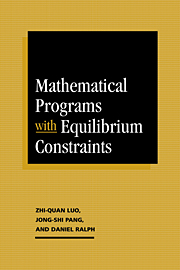Numbering System
Published online by Cambridge University Press: 05 December 2011
Summary
The six chapters of the book are numbered from 1 to 6, the sections are denoted by decimal numbers of the type 2.3 (meaning Section 3 of Chapter 2). Many sections are further divided into subsections, some subsections are numbered, others are not. The numbered subsections are by decimal numbers following the section numbers; e.g., Subsection 1.3.1 means Chapter 1, Section 3, Subsection 1.
All definitions, results, and miscellaneous items are numbered consecutively within each section in the form 1.3.5, 1.3.6, meaning Items 5 and 6 in Section 3 of Chapter 1. All items are also identified by their types (e.g., 1.4.1 Proposition., 1.4.2 Remark.). When an item is referred to in the text, it is called out as Algorithm 5.2.1, Theorem 4.1.7, etc.
Equations are numbered consecutively in each section by (1), (2), etc. Any reference to an equation in the same section is by this number only, whereas equations in another section are identified by chapter, section, and equation. Thus (3.1.4) means Equation (4) in Section 1 of Chapter 3.
- Type
- Chapter
- Information
- Mathematical Programs with Equilibrium Constraints , pp. xi - xiiPublisher: Cambridge University PressPrint publication year: 1996

